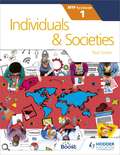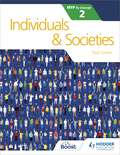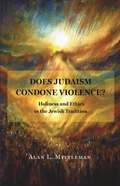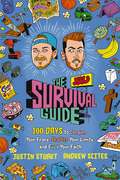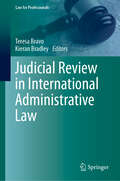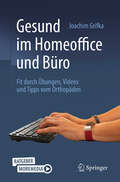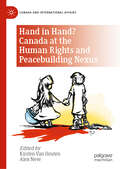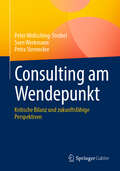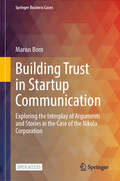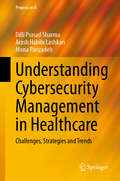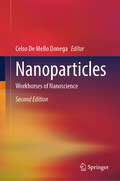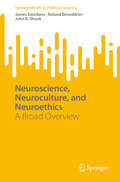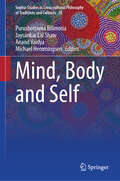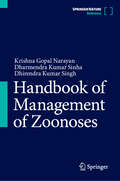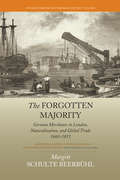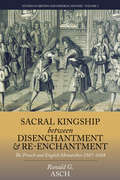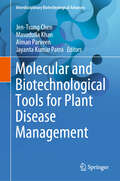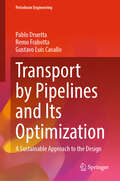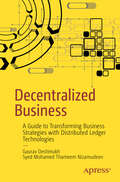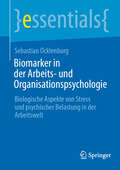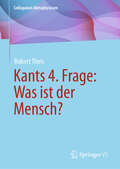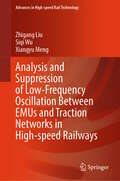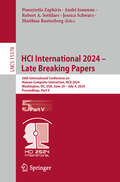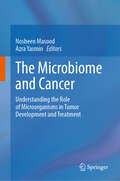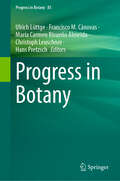- Table View
- List View
Individuals and Societies for the IB MYP 1: by Concept
by Paul GraceExam Board: IBLevel: MYPSubject: Social ScienceFirst Teaching: September 2016First Exam: June 2017Develop your skills to become an inquiring learner; ensure you navigate the MYP framework with confidence using a concept-driven and assessment-focused approach to Individuals and Societies presented in global contexts.- Develop conceptual understanding with key MYP concepts and related concepts at the heart of each chapter.- Learn by asking questions with a statement of inquiry in each chapter. - Prepare for every aspect of assessment using support and tasks designed by experienced educators.- Understand how to extend your learning through research projects and interdisciplinary opportunities.
Individual and Societies for the IB MYP 2
by Paul GraceDevelop your skills to become an inquiring learner; ensure you navigate the MYP framework with confidence using a concept-driven and assessment-focused approach to Individuals and Societies presented in global contexts.- Develop conceptual understanding with key MYP concepts and related concepts at the heart of each chapter.- Learn by asking questions with a statement of inquiry in each chapter. - Prepare for every aspect of assessment using support and tasks designed by experienced educators.- Understand how to extend your learning through research projects and interdisciplinary opportunities.
Does Judaism Condone Violence?: Holiness and Ethics in the Jewish Tradition
by Alan L. MittlemanA philosophical case against religious violenceWe live in an age beset by religiously inspired violence. Terms such as “holy war” are the stock-in-trade of the evening news. But what is the relationship between holiness and violence? Can acts such as murder ever truly be described as holy? In Does Judaism Condone Violence?, Alan Mittleman offers a searching philosophical investigation of such questions in the Jewish tradition. Jewish texts feature episodes of divinely inspired violence, and the position of the Jews as God’s chosen people has been invoked to justify violent acts today. Are these justifications valid? Or does our understanding of the holy entail an ethic that argues against violence?Reconstructing the concept of the holy through a philosophical examination of biblical texts, Mittleman finds that the holy and the good are inextricably linked, and that our experience of holiness is authenticated through its moral consequences. Our understanding of the holy develops through reflection on God’s creation of the natural world, and our values emerge through our relations with that world. Ultimately, Mittleman concludes, religious justifications for violence cannot be sustained.Lucid and incisive, Does Judaism Condone Violence? is a powerful counterargument to those who claim that the holy is irrational and amoral. With philosophical implications that extend far beyond the Jewish tradition, this book should be read by anyone concerned about the troubling connection between holiness and violence.
The JStu Survival Guide: 100 Days to Conquer Your Fears, Shatter Your Limits, and Build Your Faith
by Justin Stuart Andrew ScitesAre you ready for the ultimate challenge to build up your faith? Join best friends Justin and Andrew from the hit YouTube channel JStu for this daring 100-day devotional that will test your limits, call for courage, and level up your adventure with Jesus.The JStu Survival Guide, for tweens and teens, features100 devotions that inspire and equip kids 10 and up to survive and thrive through life's obstacles with grit, confidence, and authenticity;13 ultimate challenges for kids, friends, and families to complete together;Bible verses and actionable takeaways;hilarious true stories and encouraging real talk from the guys about motivation, self-care, fear, hope, identity, relationships, social media, and world view;behind-the-scenes details, embarrassing moments, and favorite Jstu memories; anda sturdy and compact hardcover that fits nicely in a backpack or on a nightstand.The JStu Survival Guide: 100 Days to Conquer Your Fears, Shatter Your Limits, and Build Your Faith is an encouraging gift for birthdays, holidays, new school years, and faith decisions. Older children, tweens, and teens will practice boldness, stretch their comfort zones, grow in faith, and light up the world for Jesus as they explore The JStu Survival Guide with Justin and Andrew, the ultimate survival-challenge duo.
Judicial Review in International Administrative Law (Law for Professionals)
by Teresa Bravo Kieran BradleyThis book addresses the topic of judicial review in international administrative law, focusing in particular on the case law of the most established international administrative tribunals (e.g the United Nations Appeal and Dispute Tribunals, the Administrative Tribunal of the International Labor Organization, the one of the Inter-American Development Bank Group, the International Monetary Fund, the World Bank and the Organization of American States) as well as, the major challenges faced by these jurisdictions at the present time, when dealing with grievances of international civil servants. The book is composed of seven chapters, written by legal professionals (all of them with significant experience in international administrative law) and address different subjects, such as, “the doctrine of acquired rights”, the institutional setting of the administrative tribunal of the Inter-American Development Bank Group, legal standing and the role played by staff associations in the context of judicial review of administrative decisions. The purpose was to identify the main constraints staff associations face and discuss whether it is possible (and if so, how) for those associations to challenge decisions of an administrative and regulatory nature. The three final chapters of the book are inter-related and address the most difficult challenges in this jurisdiction, since they focus on investigations for misconduct, including harassment, and disciplinary procedures. The authors addressed the role and mandate of the investigators, the means at their disposal to pursue those functions, as well the different standards of proof applied by administrative tribunals to disputes in these areas.
Gesund im Homeoffice und Büro: Fit durch Übungen, Videos und Tipps vom Orthopäden
by Joachim GrifkaArbeit vor dem Bildschirm gehört zu unserem Alltag, sowohl privat als auch beruflich. 70% aller Berufstätigen gehen einer Tätigkeit am PC nach. Was bislang vor allem im Büro stattfand, verlagerte sich durch die Covid 19 Pandemie ins Home Office – und diese Veränderung ist geblieben. Wir müssen uns also auch im privaten Umfeld auf einen Bildschirmarbeitsplatz einstellen. Mit der vermehrten Home Office-Tätigkeit sind Beschwerden und Erkrankungen im Rücken-, Hals-Nacken- und Armbereich erheblich angestiegen. Und dabei gibt es einfache Prinzipien für einen ergonomisch korrekten Bildschirmarbeitsplatz, die jeder schnell umsetzen kann. Zum einen geht es um die richtige Einrichtung des Bildschirmarbeitsplatzes, zum anderen um Ausgleichsübungen, die jeder selbst durchführen kann. Dieser Ratgeber gibt Ihnen konkrete Tipps für einen ergonomisch einwandfreien Arbeitsplatz und zeigt Ihnen darüber hinaus zusätzlich, was Sie persönlich sonst noch tun können, um fit und gesund zu bleiben. Detaillierte Darstellungen und bewährte Übungen mit Video-Anleitungen, die Sie ganz speziell für sich zusammenstellen können, helfen Ihnen dabei. So erhalten Sie ein ideales Trainingsprogramm, mit dem Sie im Alltag fit werden und bleiben. Empfohlen Vom Berufsverband für Orthopädie und Unfallchirurgie, vom Berufs- und Wirtschaftsverband der Selbständigen in der Physiotherapie und dem Deutschen Verband für Physiotherapie e.V.
Hand in Hand? Canada at the Human Rights and Peacebuilding Nexus (Canada and International Affairs)
by Kirsten Van Houten Alex NeveThis book includes contributions from both Canadian academics and civil society leaders. Drawing from critical international relations theory, it examines the policy and practice of the Canadian state and civil society on indigenous approaches to the emerging human rights and peacebuilding nexus. Authors address themes including foreign policy, inclusion, international justice and corporate accountability as they relate to this nexus. In so doing, the volume fills a gap in the Canadian foreign policy literature related to peacebuilding and human rights and seeks to refine and deepen the existing literature through its exploration of policy and practice. It concludes that while Canada has developed a strong capacity to address emergent human rights and peacebuilding concerns, its ambitions are inconsistent and often overshadowed by domestic political priorities, economic interests and security concerns.
Consulting am Wendepunkt: Kritische Bilanz und zukunftsfähige Perspektiven
by Peter Wollsching-Strobel Sven Werkmann Petra SterneckerWir brauchen Beratung heute dringender denn je – aber nicht die alte! Beratung, vor allem Unternehmensberatung, beeinflusst wirtschaftliches Handeln maßgeblich. Sie kann als zentraler Stellhebel für neuen Erfolg sowie für eine gelungene und zugleich renditestarke Transformation unseres Standorts hin zu mehr Nachhaltigkeit und verantwortungsvoller technologischer Innovation wirken. Dazu muss sich Beratung jedoch selbst neu aufstellen. Das Buch analysiert gründlich die zentralen gesellschaftlichen und wirtschaftlichen Problemfelder, die den gegenwärtigen Beratungskontext bestimmen, und beschreibt die historische Entwicklung wie auch die aktuelle Beratungsrealität. Die Autoren definieren Anforderungen an zukunftsfähige Unternehmen – und schlussfolgend – an eine Unternehmensberatung der Zukunft. Führungskräfte in großen und mittleren Unternehmen wie auch Forschende, Lehrende und Praktiker erhalten neue Anregungen und weiterführende Perspektiven.
Building Trust in Startup Communication: Exploring the Interplay of Arguments and Stories in the Case of the Nikola Corporation (Springer Business Cases)
by Marius BornThis open access book explores the intriguing narrative of Nikola Corporation's startup journey in this insightful case study, examining its rapid ascent and subsequent decline from both a narrative and argumentative perspective. Founded by Trevor Milton, Nikola initially garnered investor interest with promises of a cleaner, sustainable alternative to diesel trucks. However, the company's surge in valuation was short-lived, as accusations from a short seller triggered a trust crisis, exposing alleged deception and raising doubts about the company's technology claims. This case study particularly focuses on the nuances of startup communication, emphasizing the critical importance of effective and trustworthy strategic communication for emerging tech ventures. It provides an in-depth look at the methods and tools necessary for startups to navigate initial skepticism and data limitations without exposing themselves to potential crises. Key insights include crafting compelling startup stories while maintaining trustworthiness, meeting investor information needs in an argumentatively convincing structure, recognizing the risks of blind faith in charismatic founders, and implementing internal checks and balances to safeguard against deception. Nikola's story serves as a cautionary tale, offering valuable lessons for entrepreneurs, investors, and scholars alike. This comprehensive examination sheds light on the challenges faced by startups dependent on emerging technologies and ambitious promises, making it an indispensable addition to the reading list of entrepreneurs.
Understanding Cybersecurity Management in Healthcare: Challenges, Strategies and Trends (Progress in IS)
by Dilli Prasad Sharma Arash Habibi Lashkari Mona ParizadehDigital technology is increasingly used in the healthcare sector, and healthcare organizations handle sensitive and confidential information that needs to be kept secure and protected. Therefore, the importance of cybersecurity in healthcare cannot be overstated. Cyber threats can compromise patient data, disrupt healthcare services, and put personal safety at risk. This book provides an understanding of cybersecurity in healthcare, which is crucial for protecting personal information, ensuring compliance with regulations, maintaining patient trust, and preventing cyber-attacks. Before defining cybersecurity in healthcare, the authors introduce the healthcare environment and cybersecurity basics to readers. They then emphasize the importance of data protection and privacy, software, and personal cybersecurity. Also, they highlight the importance of educating staff about cybersecurity. The discussion continues with data and information security in healthcare, including data threats and vulnerabilities, the difference between data protection and privacy, and how to protect data. Afterward, they focus on the software system frameworks and types of infra-security and app security in healthcare. A key goal of this book is to provide readers with an understanding of how to detect and prevent cyber-attacks in the healthcare sector and how to respond to and recover from them. Moreover, it gives them an insight into cybersecurity vulnerabilities in healthcare and how they are mitigated. A chapter on cybersecurity ethics and healthcare data governance frameworks is also included in the book. The last chapter explores the challenges healthcare organizations face in maintaining security compliance and security practice guidelines that exist. By understanding the risks and challenges of cybersecurity in healthcare, healthcare providers and organizations can better protect sensitive and confidential data and ensure the safety and privacy of those they serve.
Nanoparticles: Workhorses of Nanoscience
by Celso De Mello DonegaThis textbook builds upon the solid foundation established by the first edition, addressing the persistent scarcity of comprehensive yet accessible textbooks in the field. While preserving the original structure and essence, this revised edition updates the content to reflect a decade of advancements in Nanoscience. Designed for advanced undergraduate and beginning graduate students in Chemistry, Physics, and Materials Science, the book focuses on the fundamental principles illustrated through the study of nanoparticles. It encompasses three interconnected parts: the physicochemical principles of Nanoscience, the chemistry and synthesis of nanoparticles, and techniques for studying these materials. The new edition benefits from years of classroom experience, enhancing clarity based on student feedback, and remains a didactical tool that emphasizes essential concepts without sacrificing depth. Despite necessary exclusions to maintain conciseness, such as detailed discussions on superlattices and nanomagnetism, the book provides a comprehensive introduction to the field, leaving room for readers to explore rapidly evolving applications through the cited literature.
Neuroscience, Neuroculture, and Neuroethics: A Broad Overview (SpringerBriefs in Political Science)
by James Giordano Roland Benedikter John R. ShookContemporary brain research is challenging Western societal norms by questioning basic cornerstones such as individuality, freedom, rationality, solidarity, and the concept of the human being in general. It is giving way to profound changes in Western concepts of culture and civilization. This volume provides a broad overview of the cultural changes incurred by neuroscience and neurotechnology, and explores the evolving fields of neuroeconomics, neuroreligion, neuropolitics, and neuroethics. It takes a multi-disciplinary approach in explaining how neuroscience and neurotechnology will affect society, and illustrates how these tools and methods are being used in research and ever-expanding practices in varying fields. Praise for Neuroscience, Neuroculture, and Neuroethics: A Broad Overview “Giordano, Benedikter and Shook provide an accessible, timely, and engaging introduction to the main challenges of neuroscience and neurotechnology for individuals and society. It is impressively wide-ranging, insightfully examining philosophical, cultural, political, and economic dimensions of brain science. An especially fascinating aspect of the book is discussion of the implications of bioenhancement for transhumanism and how it could influence how we define who we are.” --Walter Glannon, Professor Emeritus of Philosophy, University of Calgary, Canada “This book provides an excellent survey about the challenging ‘Neuro-World’. It reflects the different perspectives which are relevant for modern societies. It is full of information to gather additional knowledge on an international and interdisciplinary level.” --Prof. Dr. Ernst Pöppel, Professor of Medical Psychology, Ludwig Maximilian University (LMU) of Munich, Germany “This engaging and highly accessible book offers an excellent short introduction to the powerful impact of neuroscience and neurotechnology upon modern societies. Covering a broad range of issues and perspectives from neuroscience, social science, philosophy, and ethics, it is eminently suitable for teaching and provides a thought-provoking basis for further discussions.” --Kathinka Evers, Professor of Philosophy, Senior Researcher in Philosophy at the Centre for Research Ethics & Bioethics (CRB) at Uppsala University, Sweden; and Professor Ad Honorem at the Universidad Central de Chile
Mind, Body and Self (Sophia Studies in Cross-cultural Philosophy of Traditions and Cultures #38)
by Purushottama Bilimoria Jaysankar Lal Shaw Anand Vaidya Michael HemmingsenThis book is a unique collaboration of philosophers from across the world bringing together contemporary concepts of consciousness, the Māori conception of self, as well as Indian and Buddhist concepts of self and mental states. Contemporary concepts of consciousness include higher-order consciousness and phenomenological approaches. The idea behind this volume came from an international conference on ‘Mind, Body and Self’ held at Victoria University of Wellington; organized by the Society for Philosophy and Culture. The authors herein contribute to the relationship between concepts of self, mind, and body. The wide variety of contributors from across cultural backgrounds adds to a diverse and valuable conversation on the nature of human existence and thoughts of self. This book appeals to students and researchers working in philosophy and religious studies.
Handbook of Management of Zoonoses
by Krishna Gopal Narayan Dharmendra Kumar Sinha Dhirendra Kumar SinghThis book reviews the etiology of major zoonotic diseases, their impact on human health, and control mechanisms for better management. It also examines factors influencing transmission, diagnosis, treatment, management, and prevention of zoonotic diseases caused by different human pathogens, including bacteria, viruses, fungi, protozoans, and parasites. It also introduces zoonoses with a wildlife reservoir and discusses different transmission modes, and factors that influence the epidemiology of zoonoses. It further discusses the holistic strategies for the cost-effective prevention and control of these zoonoses. Towards the end, the book also discusses infections that have spread from non-human primates to humans and strategies to improve disease control and elimination. This book is very useful for students, academicians, and researchers of veterinary sciences, veterinary medicine, and, veterinary public health.
The Forgotten Majority: German Merchants in London, Naturalization, and Global Trade 1660-1815 (Studies in British and Imperial History #3)
by Margrit Schulte BeerbühlThe “forgotten majority” of German merchants in London between the end of the Hanseatic League and the end of the Napoleonic Wars became the largest mercantile Christian immigrant group in the eighteenth century. Using previously neglected and little used evidence, this book assesses the causes of their migration, the establishment of their businesses in the capital, and the global reach of the enterprises. As the acquisition of British nationality was the admission ticket to Britain’s commercial empire, it investigates the commercial function of British naturalization policy in the early modern period, while also considering the risks of failure and chance for a new beginning in a foreign environment. As more German merchants integrated into British commercial society, they contributed to London becoming the leading place of exchange between the European continent, Russia, and the New World.
Sacral Kingship Between Disenchantment and Re-enchantment: The French and English Monarchies 1587-1688 (Studies in British and Imperial History #2)
by Ronald G. AschFrance and England are often seen as monarchies standing at opposite ends of the spectrum of seventeenth-century European political culture. On the one hand the Bourbon monarchy took the high road to absolutism, while on the other the Stuarts never quite recovered from the diminution of their royal authority following the regicide of Charles I in 1649. However, both monarchies shared a common medieval heritage of sacral kingship, and their histories remained deeply entangled throughout the century. This study focuses on the interaction between ideas of monarchy and images of power in the two countries between the execution of Mary Queen of Scots and the Glorious Revolution. It demonstrates that even in periods when politics were seemingly secularized, as in France at the end of the Wars of Religion, and in latter seventeenth- century England, the appeal to religious images and values still lent legitimacy to royal authority by emphasizing the sacral aura or providential role which church and religion conferred on monarchs.
Molecular and Biotechnological Tools for Plant Disease Management (Interdisciplinary Biotechnological Advances)
by Jen-Tsung Chen Masudulla Khan Aiman Parveen Jayanta Kumar PatraThis book aims to present the latest advances in the application of plant biotechnology and molecular biology in disease management. Among these, molecular techniques can be used to accelerate the detection and identification of pests and pathogens in plants. Also, the identification of resistance genes, characterization of desired resistance genes, and transfer of resistance gene(s) into plants have been performed by applying molecular techniques. The book will collect chapters exploring emerging areas of plant biotechnology including RNAi technology, genetic engineering, GWAS, CRISPR, and nanobiotechnology, and their applications in plant disease management and provides the latest concepts and advances in the field of plant pathology, including detection, identification, characterization, classification and diagnosis, host resistance, disease forecasting, management of plant pests and pathogens, and plant biotechnological approaches. This book offers a valuable reference for educators, students, and researchers in all disciplines of the agricultural sciences, life sciences, and biotechnology at universities, research institutions, and biotechnology companies.
Transport by Pipelines and Its Optimization: A Sustainable Approach to the Design (Petroleum Engineering)
by Pablo Druetta Remo Frabotta Gustavo Luis CavalloThis textbook introduces pipeline design, one of the most efficient techniques for mass and energy transport available today. The global economy heavily relies on pipelines. However, designing a pipeline is more complex than it might seem; it involves many technical and economic factors that must work together to create an optimized system. The book begins with basic concepts of pipelines, including a description of the materials used, heat transfer between the system and medium, and the main components of pumping and compression stations, which are vital for the subsequent chapters. It then presents a simple yet detailed overview of these factors and introduces a mathematical methodology that combines them to deliver an optimized pipe design, minimizing costs and reducing energy consumption. The book also covers the transient verification of this design using well-known balance equations and material property relationships for both incompressible and compressible fluids, to validate the initial design. Finally, the book explores the analysis of multiphase pipelines, where the goal is to transport a particular material (e.g., solid) using a different medium (e.g., air or water).
Decentralized Business: A Guide to Transforming Business Strategies with Distributed Ledger Technologies
by Gaurav Deshmukh Syed Mohamed Thameem NizamudeenEmbark on a journey to business evolution grounded in the real-world experiences and challenges faced by those at the forefront of the Web2 revolution. In a landscape where adaptability is paramount, this book is a guiding light amidst a sea of uncertainty. Crafted by seasoned Web2 professionals, it offers a unique perspective on transitioning from traditional cloud computing to decentralized technologies. Delving beyond theory, this book provides actionable insights and strategies to navigate the complexities of Distributed Ledger Technologies (DLTs). Rather than just discussing the implementation of DLTs, it explores the intricacies of execution, offering tangible guidance to facilitate a seamless transition to the decentralized landscape. Moreover, this book doesn't stop at transition—it's a blueprint for thriving in the Web3 era. By offering strategic perspectives and tactical advice, it equips businesses of all sizes to not only survive but flourish in the decentralized economy. Whether you're a startup poised for disruption or an established enterprise seeking innovation, 'Decentralized Business' empowers you to confidently embrace the future. The time for passive observation is over; the future of business is decentralized, and Decentralized Business is your guide to navigating this evolution. Join the ranks of forward-thinkers shaping tomorrow's economy—secure your copy now and begin the journey of transformation and opportunity. What You Will Learn Understand the foundational concepts of DLTs and their relevance to Web2 professionals. Review security considerations and best practices for implementing decentralized solutions. Apply strategies for integrating DLTs into existing cloud-based infrastructures. Who This Book Is For IT managers and executives looking to explore the potential of decentralized solutions; technology consultants advising businesses on digital transformation and cloud-based strategies; professionals and architects are seeking to expand their knowledge into the realm of DLTs
Biomarker in der Arbeits- und Organisationspsychologie: Biologische Aspekte von Stress und psychischer Belastung in der Arbeitswelt (essentials)
by Sebastian OcklenburgDieses essential gibt einen Überblick über Biomarker-Forschung in der Arbeits- und Organisationspsychologie. Dabei werden die zentralen Biomarker und Methoden zur Erfassung von Biomarkern erläutert. Der Autor beleuchtet spezifisch relevante Biomarker für psychische Erkrankungen im Kontext der Arbeitswelt sowie Biomarker für psychische Belastungsfolgen der Arbeit wie Burn-out. Das essential endet mit einer praxisorientierten Erläuterung organisationaler und finanzieller Aspekte von biopsychologischer Forschung in der Arbeitswelt.
Kants 4. Frage: Was ist der Mensch? (Colloquium Metaphysicum)
by Robert TheisIn seiner berühmten Logikvorlesung stellt Immanuel Kant die berühmten Leitfragen der Philosophie "Was kann ich wissen?", "Was soll ich tun?" und "Was darf ich hoffen?". Dem fügt er dann die Frage "Was ist der Mensch?" an und schreibt, all das, was in den ersten Fragen behandelt würde, könne man zur vierten zählen. Dieses Buch fragt demnach nach dem anthropologischen Subtext der drei ersten Fragen, also: Was erfahren wir über die vierte Frage, wenn Kant sich der Wissens-, Sollens- und Hoffensfrage zuwendet?
Analysis and Suppression of Low-Frequency Oscillation Between EMUs and Traction Networks in High-speed Railways (Advances in High-speed Rail Technology)
by Zhigang Liu Siqi Wu Xiangyu MengThis book focuses on the low-frequency oscillation between EMUs and traction networks in high-speed Railways. As the power source of high-speed trains, the traction network's power performance directly affects the safe and stable operation of the train. However, the low-frequency oscillation between EMUs and traction networks will fluctuate voltage or current, resulting in poor power quality, electrical device failure, and even interruption of traction power. Therefore, it is important to reveal the mechanism of low-frequency oscillation and propose suppression strategies. This book systematically shows the newest research results of analysis and suppression of low-frequency oscillation between EMUs and traction networks in high-speed railways, especially in the modeling methods of vehicle-grid systems and suppression strategies for low-frequency oscillation. These methods or strategies can provide important references and help for researchers, scholars, and engineers on traction power technology in high-speed railways. The main contents include the overview of low-frequency oscillation between EMUs and traction networks, the introduction of main modeling methods for vehicle-grid systems, especially single-phase rectifiers, the line-side converter control algorithms in vehicles for the suppression of low-frequency oscillation, the traction substation power compensation strategies for the suppression of low-frequency oscillation, etc.
HCI International 2024 – Late Breaking Papers: 26th International Conference on Human-Computer Interaction, HCII 2024, Washington, DC, USA, June 29 – July 4, 2024, Proceedings, Part V (Lecture Notes in Computer Science #15378)
by Panayiotis Zaphiris Andri Ioannou Robert A. Sottilare Jessica Schwarz Matthias RauterbergThis nine-volume set LNCS 15473-15482 constitutes the proceedings of the 26th International Conference, HCI International 2023, in Washington, DC, USA, in June/July 2024. For the HCCII 2024 proceedings, a total of 1271 papers and 309 posters was carefully reviewed and selected from 5108 submissions. Additionally, 222 papers and 104 posters are included in the volumes of the proceedings published after the conference, as “Late Breaking Work”. These papers were organized in the following topical sections: HCI Theories, Methods and Tools; Multimodal Interaction; Interacting with Chatbots and Generative AI; Interacting in Social Media; Fintech, Consumer Behavior and the Business Environment; Design for Health and Wellbeing; Ergonomics and Digital Human Modelling; Virtual Experiences in XR and the Metaverse; Playing Experiences; Design for Learning; New Cultural and Tourism Experiences; Accessibility and Design for All; Design for Older Adults; User Experience Design and Evaluation: Novel Approaches and Case Studies; Safety, Security and Privacy; HCI in Automated Vehicles and Automotive; HCI in Aviation, Transport and Safety; Human-Centered AI; AI for Decision Making and Sentiment Analysis.
The Microbiome and Cancer: Understanding the Role of Microorganisms in Tumor Development and Treatment
by Nosheen Masood Azra YasminThis book explores the intricate relationship between microorganisms and cancer. It begins by discussing the microbiome of the human body and its role in cancer development. The cellular organization of tumors is also explored in detail. The book then delves into the specific microorganisms that have been associated with various types of cancer. The role of HCV in hepatocellular carcinoma is discussed in depth, as well as cancers associated with EBV. Further, it also explores the link between HPV and urogenital and head and neck cancers, and Kaposi’s sarcoma-associated Herpes virus. The chapter is dedicated to dispelling myths surrounding Aspergillus and lung cancer and examines the complications associated with fungal infections in cancer treatment. The book then explores the link between parasites and cancer, and the role that protists play in cancer development. Finally, the book concludes with a discussion of cancer management and therapies related to microorganisms. Overall, the book provides a comprehensive overview of the relationship between microorganisms and cancer and sheds light on how this relationship can be harnessed for more effective cancer management and treatment.
Progress in Botany Vol. 85 (Progress in Botany #85)
by Ulrich Lüttge Francisco M. Cánovas María Carmen Risueño Almeida Christoph Leuschner Hans PretzschWith one volume each year, this series keeps scientists and advanced students informed of the latest developments and results in all areas of the plant sciences. This latest volume includes reviews on plant physiology, biochemistry, genetics and genomics, forests, and ecosystems.
